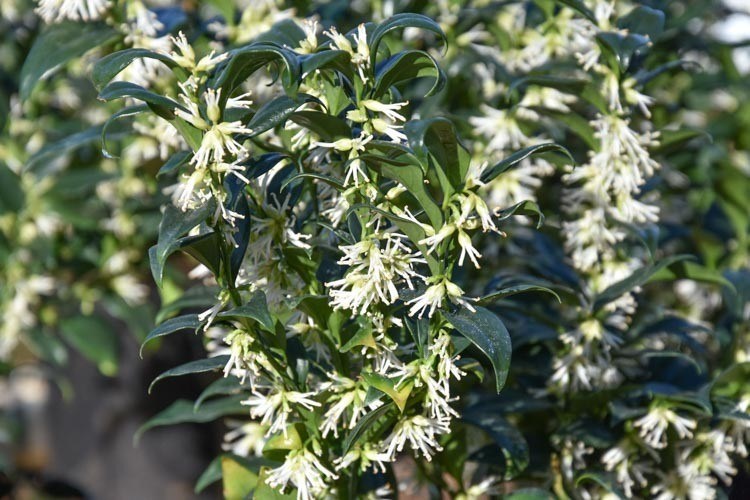The following column was submitted to the Tri-City News from Brian Minter — master gardener, best-selling author, Order of Canada recipient and co-owner of Minter Country Garden Store.
I’ve seen people stop dead in their tracks at this time of year, attempting to discover the source of an amazing perfume.
Wow, perfume in January and February?
You bet! One of the best sources of winter fragrance is a rather unassuming green plant that is often used as a ground cover or small hedge.
It’s commonly called ‘Sweet Box’ because of its similarity to boxwood, but in botanical terms this Himalayan wonder is called ‘sarcococca.'
It prefers partial or full shade for its best performance but if it has to, it will take sun with the consequence of more yellow foliage instead of rich, shiny, deep green leaves. Sarcococcas are a ‘must have’ in winter containers or porch pots outside your door or wherever you will have the most exposure to their intense perfume.
Although sarcococcas love well-drained soils that are slightly acidic, truly they are not fussy. I’m surprised more folks, as well as professional landscapers and landscape architects, don’t use them more often.
Sarcococca humilis works well as a ground cover, growing only 17–24 inches (45–60 cm) tall and wide and spreading into compact clumps that look attractive all year round. Once they become established, they will help control weeds. Depending upon the severity of the winter, their very tiny white male flowers will provide the most magnificent scent for almost two months between mid-January and late February. These flowers turn into tiny black berries.
Sidhu Nursery in Mission has selected a few sarcococcas that are much improved. ‘Fragrant Valley’ is a more vigorous strain of S. humilis which spreads more quickly, making it ideal as a ground cover. It grows 16 inches (40cm) tall and 36 inches (91cm) wide. Its leaves are more pointed and much fuller.
Sarcococca ‘Fragrant Mountain’ is also a ‘humilis’ species, but it has much larger foliage (about the size of a skimmia leaf). It also has an attractive, more upright habit, growing 24 inches (60cm) tall and 36 inches (91cm) wide. Both ‘Fragrant Valley’ and ‘Fragrant Mountain’ are deer resistant.
As a larger plant in your landscape, Sarcococca confusa grows about 39-78 inches (1-2m) in height and width. It’s a slow grower and can be easily kept as a smaller plant. It, too, has perfumed white flowers that turn into black berries. Sarcococca ruscifolia is similar in size to S. confusa, but it has attractive red berries. A little tip - one that very few folks know- when S. ruscifolia is planted against a wall or trellis, it easily grows into a naturally espaliered form that looks quite stunning and makes a nice addition to your patio for both perfume and privacy.
Because many people are not checking out garden stores at this time of year, they miss out on this amazing winter gem, so now is a good time to visit your favourite garden centre if simply to smell one of nature’s best perfumes. Sarcococcas make wonderful gifts, especially for Valentine’s Day, and they keep giving year after year.
If sarcococcas don’t excite you, try some of the other plants that are fragrant at this time of the year, such as the golden yellow witch hazel (Hamamelis mollis), winter blooming white Lonicera fragrantissima, wintersweet (Chimonanthus praecox) or February daphne (Daphne mezereum). With our mild January so far, don’t miss out on a huge value add for your patio and garden.




